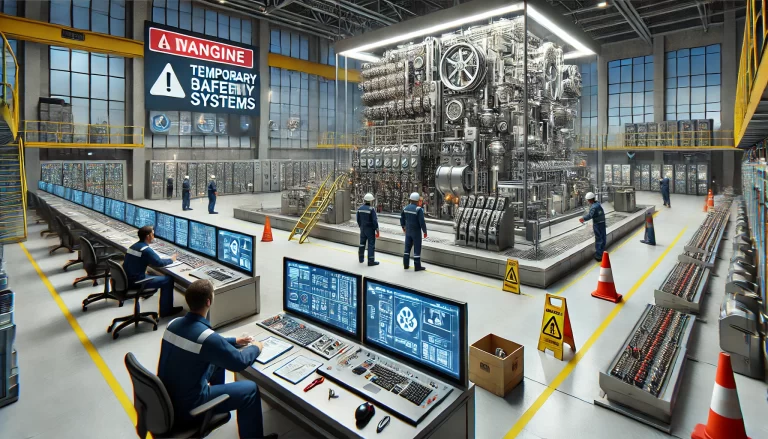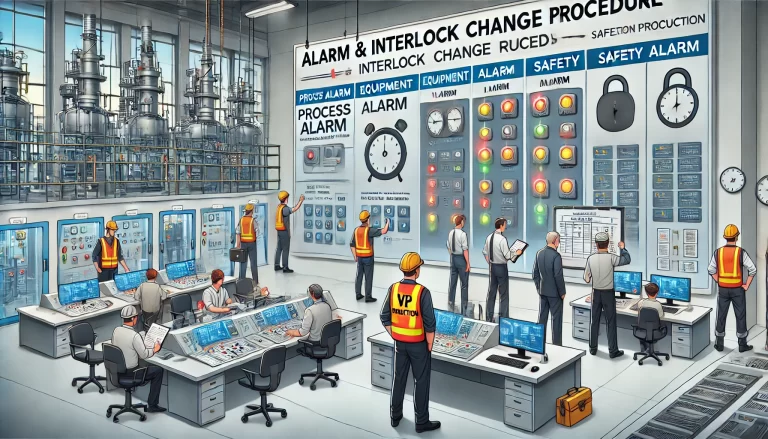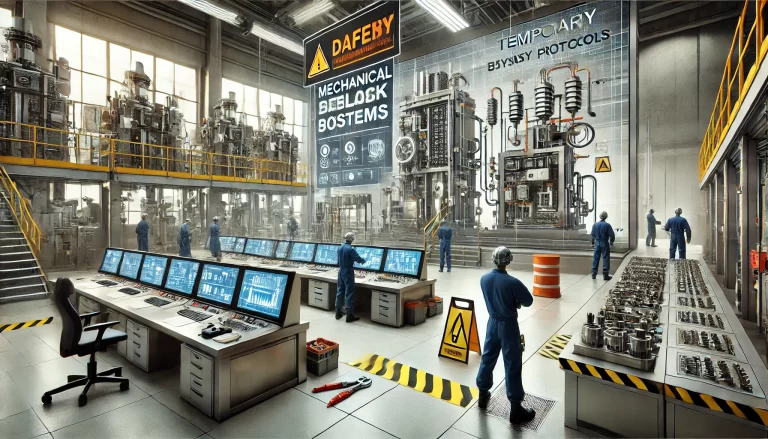1. Purpose
This procedure is established to ensure standardized, professional, and hierarchical management of alarms and interlocks within all departments of the company. It specifies the management content and methodologies applicable to alarms and interlocks associated with production units.
2. Scope
This procedure applies to the management of alarms and interlocks across all production units of XX Company.

3. Organizational Structure and Responsibilities
3.1 Alarm and Interlock Management Team
The Alarm and Interlock Management Team is under the Production Technology Office, which is responsible for daily supervision and execution.
Team Leader: Vice President of Production
Deputy Team Leaders: Heads of Process and Equipment
Members: Professionals from the Production Technology Office (process, equipment, safety), workshop supervisors, and electrical/instrumentation engineers
3.2 Responsibilities
Team Leader: Overall responsibility for alarm/interlock management.
Deputy Leaders: Supervision of process and equipment-related alarm/interlock activities.
Members:
Production Technology Office: Establishment, revision, and supervision of implementation; review of activation/deactivation and changes of alarms/interlocks.
Workshops: Execution of alarm/interlock operations.
Electrical Engineers: Review of Class A interlock changes or deactivation/activation.
Instrumentation Engineers: Execution and system management of alarm/interlock changes or activations.

4. Content and Requirements of Alarm/Interlock Management
4.1 Classification and Grading
4.1.1 Classification
Alarms are categorized by specialty:
Process Alarms: Temperature, pressure, flow alarms, etc.
Equipment Alarms: Vibration, displacement, equipment temperature alarms, etc.
Safety Alarms: Fire safety system, toxic or combustible gas detection alarms.
Interlocks are also categorized:
Process Interlocks: Related to system operation and process adjustment.
Equipment Interlocks: Protecting equipment and controlling startup/shutdown.
Safety Interlocks: Related to fire protection and safety control systems.
4.1.2 Grading
All alarms are uniformly managed without hierarchical grading.
Interlocks are divided into three levels:
Class A: Plant-wide SIS interlocks, interlocks that may shut down multiple units or critical safety interlocks.
Class B: Interlocks that may shut down a key device or process unit.
Class C: All other standard interlocks.
4.2 Activation/Deactivation and Modification
Alarm modifications include adding, removing, or changing setpoints.
Interlock changes include altering logic, setpoints, or force status.
Interlocks can be temporarily (valid 48 hours) or permanently (valid 1 month) deactivated.
4.3 Procedure
Initiation: The responsible technician submits:
“Alarm/Interlock Change Request and Acceptance Form” (3 copies)
“Risk Assessment and Control Measures Form” (2 copies)
Preliminary Review: Signed by unit supervisor and workshop manager.
Professional Review: Reviewed by relevant specialties in the Production Technology Office.
Class A interlocks require all specialties to sign (process, equipment, safety, electrical, instrumentation).
Approval:
Class B/C interlocks: signed by either process/equipment head or VP of Production.
Implementation: Performed by instrumentation staff within 2 hours after approval.
Numbering: Ticket numbering handled by the process team.
Acceptance: Conducted within 2 hours after implementation by involved reviewers.
Archiving:
Forms stored by process team, workshop, and instrumentation team respectively.
Training: Related staff must be trained per Section 5.
4.4 Alarm Management Rules
Alarm devices must not be muted, shielded, or altered.
Operators must identify alarm causes immediately. If unresolved in 15 minutes, escalate to technical staff.
Any unresolvable alarms must be documented and submitted for professional review.
All alarms must be logged in the “Alarm Record Sheet.”
Fire and gas alarms are managed under their respective dedicated procedures.
4.5 Additional Requirements
No interlock changes are allowed without formal approval.
Alarm/interlock changes must be clearly communicated during shift handover.
Startup/shutdown periods follow the same change procedures.
All interlocks must be reviewed and activated (if applicable) within 8 hours post-startup.
Monthly inspections are required by each workshop and specialty team.
Post-maintenance, interlocks must be validated and logged.
Target interlock activation rate: 100% unless otherwise specified.
Maintain alarm, interlock, and change logs. Monthly verification is mandatory.
Format for ticket numbering:
Example: HC-240408A (HC: Workshop, 24: Year, 04: Month, 08: Ticket number, A: Deactivation / B: Activation)

5. Training
Prior to initial activation or startup, all staff must receive alarm/interlock training and pass exams.
Monthly exams must include at least 20% interlock-related content.
New staff must pass position-specific interlock exams to qualify for their roles.
Training must be documented with photos and archived by each workshop. Monthly checks conducted by the Production Technology Office.

6. Instrumentation Management for Interlocks
Interlock-related instruments must be labeled with warning tags.
These instruments must be prioritized for maintenance and monitored for faults or wear.
Before maintenance on connected pipelines or equipment, the instrumentation team must be notified and may temporarily disable interlocks to avoid false triggers.
